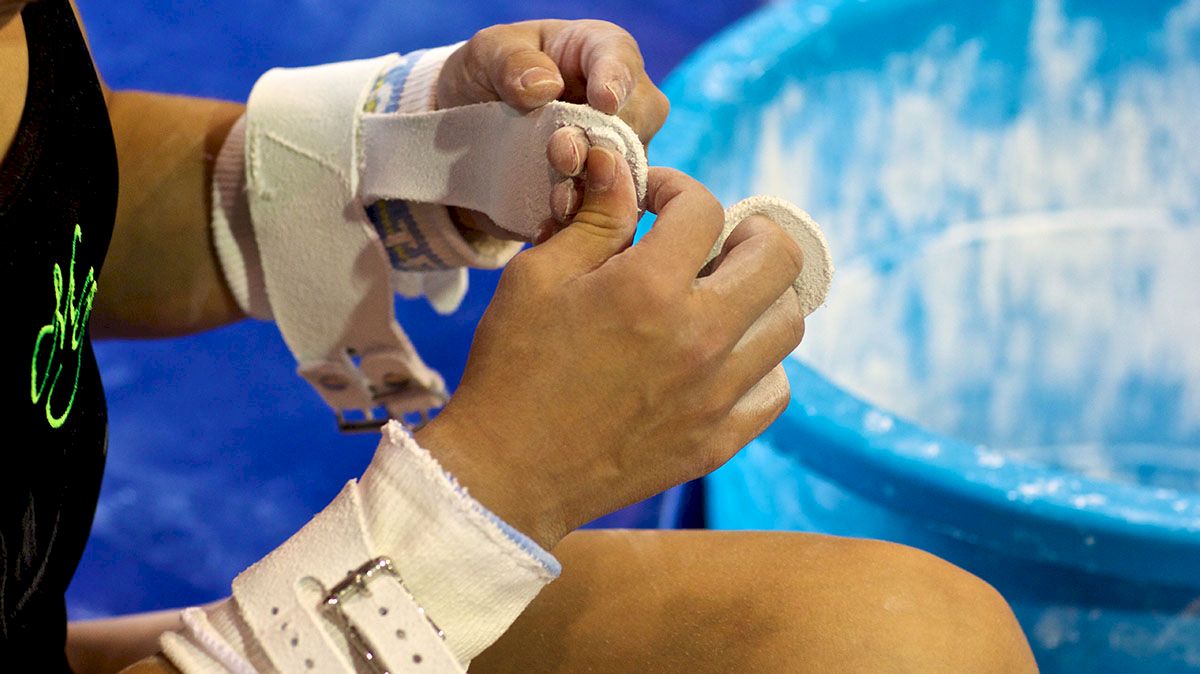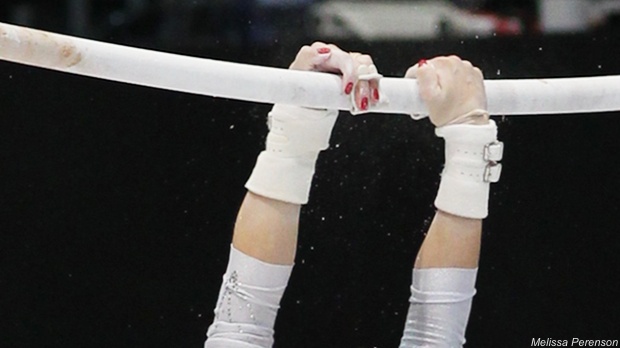Understanding The E-score In Elite Gymnastics: Uneven Bars
Understanding The E-score In Elite Gymnastics: Uneven Bars


We’re continuing our series on understanding the E-score in elite gymnastics by taking a look at the uneven bars. As a reminder, our summary below is for deductions specific to the apparatus. There are other deductions that the judges may take which are considered “general faults and penalties.” The general faults are things like bent arms/knees, legs crossed during a twisting element, and flexed feet. Landing issues are also included under general faults and include legs apart on landing or landing too close to the apparatus. Most of the general faults will result in deductions of 0.10 or 0.30, with the exception of landing deductions which can be as much as 0.80.
Check out our summary of specific uneven bars deductions below.
Composition Deductions
Every event has specific composition requirements that a gymnast must include in her routine in order to receive full credit toward their D-score. In addition to certain requirements, such as a flight element from high bar to low bar, there are also certain things that a gymnast may not include, or else she will incur a deduction. One of these elements is what’s referred to as an empty swing - a swing forward or backward without the execution of an element, before the swing reverses to the opposite direction. There are a few exceptions to this rule, but in general, a gymnast can incur a 0.30 deduction for doing an empty swing. You’ll most often catch an empty swing if a gymnast makes an error on a certain element, causing her to regroup in the middle of her routine, often resulting in an empty swing or two in order to avoid falling off the bar.
Another composition deduction is if the gymnast performs more than 2 of the same element directly connected into the dismount, resulting in 0.10 off.
Specific Apparatus Deductions
Rotation & Swing
A gymnast can incur a small deduction of 0.10 for under rotation of flight elements. Under rotation implies that when the gymnast catches the bar after a release move, her legs/hips do not continue to rotate backward to a fully extended position. The gymnast can also get 0.10 taken off if she has insufficient extension in her kips - you’ll most often see this on kips on the high bar after a transition from the low bar. On the same theme of rotation, excessive flexion of the hip joint in the leg tap (essentially more of a piked position) can result in 0.10-0.30 off. Lastly, if the gymnast exhibits “poor rhythm” in her routine (a very subjective deduction), the judges can take 0.10 off.
Amplitude
Another one of the more subjective deductions is insufficient height on flight elements, where a gymnast can incur anywhere from 0.10-0.30 in deductions depending on what the judges think. The amplitude of a gymnast’s swings and casts are also judged, and can also result in 0.10-0.30 in deductions.
Touching the Ground
The biggest deductions on bars come from major errors, unsurprisingly. Most often these errors occur from a fall or when the gymnast’s feet hit something they’re not supposed to. A fall from the bars is an entire point off. It’s the largest single deduction a gymnast can incur. It’s also important to note that the gymnast must remount the bars within 30 seconds, or else the routine is technically considered “terminated.”
Deductions can also be taken if a gymnast’s feet brush either the bars or the mat below - these deductions are a hefty 0.50. These errors often occur as a result from an error on another element - for instance, if a gymnast doesn’t complete the pak salto correctly (transitioning from high bar to low) and ends up hitting the mat with her feet.
Lastly, if the gymnast does not attempt to dismount, they will get that big deduction of 0.50 off. This only usually happens if a gymnast has already had multiple falls or is clearly too exhausted to complete a dismount safely.
Hopefully this summary has given you a better understanding of how deductions are taken on uneven bars. Stay tuned for next week’s summary of deductions on balance beam.
Related:
Understanding the E-Score in Elite Gymnastics: Vault
Elite Vaulting: The D-Score Explained
Crafting a Bars Routine: An Analysis of the D-Score
Crafting a Floor Routine: An Analysis of the D-Score
Crafting a Beam Routine: An Analysis of the D-Score